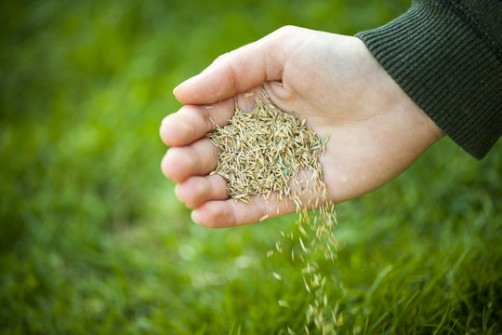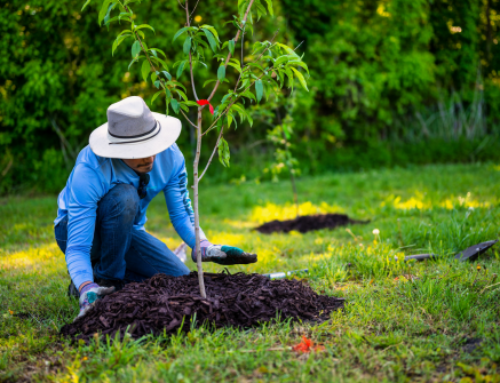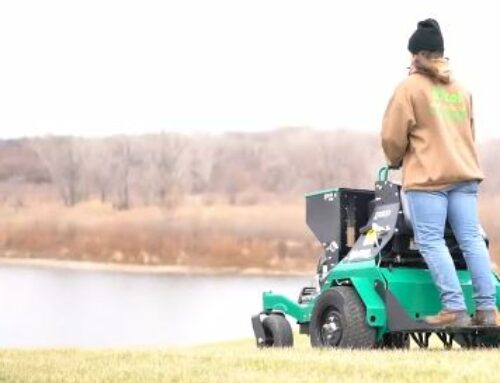Ultimate Guide to Lawn Aeration and Overseeding Mastery
A healthy, lush lawn doesn’t just happen—it takes care and the right approach. For West Des Moines homeowners, lawn aeration and overseeding are two essential steps to achieve that perfect green space.
These techniques help strengthen your lawn’s roots and fill in bare patches, making your yard look fuller and more resilient.
In this guide, we’ll break down the best types of grass for Central Iowa, the most effective overseeding methods, when to do it, and what you should do afterward to keep your lawn thriving.

The Benefits of Common Overseeding Grasses in West Des Moines: Turf Type Tall Fescue, Rye, and Kentucky Bluegrass
Choosing the right grass for your lawn can make all the difference when it comes to maintaining a healthy, vibrant yard. In West Des Moines, three grass types stand out for their ability to thrive in our local conditions:
Turf Type Tall Fescue, Rye, and Kentucky Bluegrass. Let’s explore what makes each of these grasses unique and why they’re ideal for overseeding in this area.
Different Overseeding Methods
Once you’ve chosen the right grass for your lawn, the next step is to pick the overseeding method that will give you the best results. In West Des Moines, there are a few tried-and-true techniques to ensure even coverage and healthy growth for your lawn.
The Overseeding Process
Now that you’ve chosen your overseeding method, let’s dive into the actual process of overseeding to ensure your lawn gets the best start possible.
1. Preparation
2. Overseeding
Pro Tip: Always check the label on your seed blend for the percentage of weed seeds. Using a seed with 0% weed content, like the ones we provide, ensures your lawn stays weed-free.
3. Watering
Ideal Timing for Overseeding
The best time to overseed your lawn in West Des Moines is between late August and early October. During this period, the soil is still warm enough to encourage seed germination, while the cooler air temperatures promote steady grass growth.
Ideal Aftercare Once Overseeding Is Completed
Once you’ve successfully overseeded your lawn, proper aftercare is crucial to ensure those new seeds take root and flourish. Follow these steps to maintain optimal growth and keep your lawn healthy.
Aftercare Tip #1. Preparation
Aftercare Tip #2. Fertilization
Aftercare Tip #3. Mowing
Aftercare Tip #4. Routine Lawn Care
Ready to transform your lawn into a lush, green masterpiece? At Excel Lawns and Landscape, we specialize in professional lawn aeration and overseeding services designed to give your yard the care it needs.
Our team uses the latest techniques and high-quality seed blends tailored to West Des Moines’ unique climate. Whether you’re looking to fill in bare spots or boost your lawn’s resilience, our services will ensure lasting, vibrant results.
Contact us today to schedule your consultation and take the first step toward a healthier, greener lawn.
Share This Story, Choose Your Platform!
Recent Posts
Everything You Need to Know About Mulch Installation
How Deep, How Much, What It Costs, and Why Early Spring is Ideal [...]
Is Winter the Best Time for Pruning?
Winter pruning is indeed the best time for Tree pruning, if pruning is [...]
Ultimate Guide to Lawn Aeration and Overseeding Mastery
A healthy, lush lawn doesn’t just happen—it takes care and the right approach. [...]
The Superpower of Lawn Aeration: Unlocking the secret to a vibrant Lawn
When you envision a stunning, vibrant lawn, what springs to mind? Probably a lawn [...]
Yellow Nutsedge “The Lime Green Grass invader”
It is that time of year, Yellow Nutsedge is starting to show up within our [...]
The Art of Pruning Hydrangea’s
Pruning Hydrangea's If you're growing hydrangeas at your West Des Moines home, let's keep [...]










